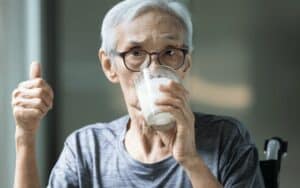Introduction
Welcome to our blog, where we provide valuable information and tips to help people over 50 live a healthy and fulfilling life. In this article, we will explore the essential aspects of maintaining bone health in later life.

Dementia Discovery That is Leaving Doctors Speechless (Try This Tonight)
Better than Morphine For Joint Pain… Yet Safer Than Aspirin?
Retire With Freedom. Start Earning Extra Cash Today.
As we age, our bones require special attention and care to remain strong and resilient. Understanding the factors affecting bone health and learning about preventive measures can significantly contribute to overall well-being. Let’s dive into the importance of bone health and the strategies for maintaining strong bones in later life.
The Importance of Bone Health
Bone health is crucial for overall well-being and quality of life. Strong and healthy bones provide the foundation for mobility, support for muscles, and protection for internal organs. In addition to these vital functions, maintaining good bone health helps to prevent osteoporosis, fractures, and other bone-related issues, especially in later life.
- Proper bone health is essential for individuals of all ages, from childhood to old age. It is particularly crucial during childhood and adolescence when bone mass increases and reaches its peak, laying the groundwork for bone health in later years.
- Healthy bones also play an important role in maintaining balance and stability, reducing the risk of falls and related injuries, especially among the elderly.
- By emphasizing the significance of bone health, individuals can make informed lifestyle choices that promote and maintain strong bones, ultimately contributing to a healthier and more active life.

Factors Affecting Bone Health
Nutrition and Diet
- Eating a healthy, well-balanced diet is essential for maintaining overall health and supporting bone health.
- Key nutrients for bone health include calcium, vitamin D, vitamin K, magnesium, and phosphorus.
- Calcium-rich foods include dairy products, leafy green vegetables, fortified plant-based milks, and tofu.
- Vitamin D can be obtained from sunlight exposure and dietary sources like fatty fish, egg yolks, and fortified foods.
- Vitamin K is found in leafy greens, broccoli, and soybeans, and plays a crucial role in bone metabolism.
- Magnesium supports bone mineralization and is present in nuts, seeds, whole grains, and dark leafy greens.
- Phosphorus is abundant in protein-rich foods, dairy, whole grains, and nuts, contributing to bone structure and function.
- Avoid excessive alcohol and caffeine consumption as they may interfere with calcium absorption and bone health.
Physical Activity
Physical activity plays a crucial role in maintaining and improving bone health. It includes a wide range of movement and exercises that contribute to bone strength, density, and overall physical well-being. Incorporating regular physical activity into your routine can have significant positive effects on bone health.
Various types of physical activities benefit bone health, including:
- Weight-bearing exercises such as walking, dancing, and hiking
- Resistance training using free weights, weight machines, or resistance bands
- Flexibility exercises like yoga and tai chi that improve balance and coordination
Engaging in regular physical activity promotes bone health in the following ways:
- Stimulates bone growth and maintenance
- Enhances bone density and strength
- Reduces the risk of osteoporosis and fractures
- Improves posture, balance, and coordination
It is recommended to follow these guidelines for optimal bone health benefits:
- Engage in weight-bearing activities for at least 30 minutes most days of the week
- Incorporate resistance training 2-3 times per week
- Include flexibility exercises for balance and mobility
Hormonal Changes
Hormones play a crucial role in regulating bone health. As we age, hormonal changes can significantly impact bone density and strength. The key hormones that influence bone health include:
- Estrogen: A decline in estrogen levels, especially in women during menopause, can lead to decreased bone mass and an increased risk of osteoporosis.
- Testosterone: In men, a gradual reduction in testosterone levels can impact bone density and increase the likelihood of osteoporosis.
- Parathyroid Hormone (PTH): PTH regulates calcium levels in the blood and plays a vital role in maintaining bone density.
Moreover, hormonal imbalances resulting from conditions like hyperthyroidism or hypothyroidism can also affect bone health. It’s essential to understand the interconnected relationship between hormonal changes and bone health to effectively address and manage any related issues.
Genetics
Genetics plays a crucial role in determining an individual’s susceptibility to certain bone-related conditions. The inheritance of specific genetic factors can influence bone density, structure, and overall bone health.
Understanding the genetic components of bone health is essential in identifying predispositions to conditions such as osteoporosis and osteogenesis imperfecta. Genetic research has revealed key insights into the interplay between hereditary factors and bone development, offering opportunities for personalized treatment and preventive strategies.
- Genetic Determinants of Bone Density
- Impact of Family History on Bone Health
- Role of Gene Variants in Bone-related Conditions
Common Bone Health Issues in Later Life
Osteoporosis
Osteoporosis is a condition characterized by a decrease in bone density, leading to fragile bones that are more prone to fractures. It often goes undiagnosed until a fracture occurs, making it a silent but serious health concern.
Key points about osteoporosis:
- Prevalent in older adults, particularly postmenopausal women
- Increased risk of hip, spine, and wrist fractures
- Importance of calcium and vitamin D for bone health
- Regular weight-bearing and muscle-strengthening exercises can aid in prevention
- Medications and lifestyle adjustments are often part of treatment plans
Fractures and Falls
Fractures and falls are significant concerns for older adults, especially those dealing with bone health issues like osteoporosis. Let’s dive deeper into understanding the impact of fractures and falls on bone health.
Fractures, commonly known as broken bones, can occur due to various reasons such as falls, accidents, or weakened bone structure. In the context of osteoporosis, fractures are particularly concerning as the bones become fragile and are more susceptible to breaking.
- Types of Fractures: There are different types of fractures, including:
- Compression Fracture
- Stress Fracture
- Pathological Fracture
- Avulsion Fracture
- Signs and Symptoms: Understanding the signs and symptoms of fractures is crucial for timely diagnosis and treatment.
Fractures, commonly known as broken bones, can occur due to various reasons such as falls, accidents, or weakened bone structure. In the context of osteoporosis, fractures are particularly concerning as the bones become fragile and are more susceptible to breaking.
- Types of Fractures: There are different types of fractures, including:
- Compression Fracture
- Stress Fracture
- Pathological Fracture
- Avulsion Fracture
- Signs and Symptoms: Understanding the signs and symptoms of fractures is crucial for timely diagnosis and treatment.
Falls
Falls are one of the leading causes of fractures and other injuries in older adults. They can result from various factors such as muscle weakness, balance issues, environmental hazards, or certain medications that affect stability.
- Risk Factors for Falls: Identifying the risk factors for falls is essential for implementing preventive measures. Some common risk factors include:
- Weakness in the Lower Body
- Poor Vision
- Medication Side Effects
- Environmental Hazards
- Preventive Strategies: Implementing strategies to prevent falls can greatly reduce the risk of fractures and promote overall well-being.
Maintaining Strong Bones

Nutritional Strategies
When it comes to maintaining strong bones, adopting the right nutritional strategies is crucial. Here are some key considerations:
- Calcium-Rich Foods: Consuming dairy products, such as milk, cheese, and yogurt, is an excellent way to obtain calcium, which is essential for bone health. Additionally, leafy green vegetables and fortified foods can also contribute to your daily calcium intake.
- Vitamin D: Adequate levels of vitamin D are necessary for the body to effectively absorb calcium. Foods like fatty fish, egg yolks, and fortified products can help meet your vitamin D needs.
- Protein: Including sources of lean protein, such as poultry, fish, and legumes, can aid in maintaining bone strength and health.
- Phosphorus: Foods rich in phosphorus, such as nuts, seeds, and whole grains, are beneficial for bone mineralization and maintaining bone structure.
Moreover, it’s important to limit the intake of foods and drinks that can hinder calcium absorption, such as excessive caffeine, alcohol, and high-salt foods.
Physical Activity and Exercise
Physical activity and exercise are essential for maintaining strong bones. Here are some ways to incorporate physical activity and exercise into your daily routine:
- Weight-bearing exercises such as walking, jogging, and dancing help to build and maintain bone density.
- Strength training exercises using weights or resistance bands can improve muscle strength and support bone health.
- Flexibility and balance exercises like yoga and tai chi can help prevent falls and fractures.
In addition to these exercises, sports such as tennis, basketball, and volleyball can contribute to bone health by providing weight-bearing and impact-loading movements.
It’s important to find activities that you enjoy and that fit your lifestyle, whether it’s dancing, hiking, cycling, or gardening. Consistency is key, so aim for at least 150 minutes of moderate-intensity aerobic activity per week, along with muscle-strengthening activities on two or more days a week.
Remember to consult with a healthcare professional before beginning any new exercise program, especially if you have any pre-existing health conditions.
Healthy Lifestyle Choices
Creating a healthy lifestyle involves making informed choices about nutrition, physical activity, and overall wellness. Here’s how you can make positive lifestyle choices for better health:
- Eating Well: Opt for a balanced diet rich in fruits, vegetables, lean proteins, and whole grains. Avoid processed foods and excessive sugar intake. Be mindful of portion sizes and practice mindful eating.
- Hydration: Stay adequately hydrated by drinking plenty of water throughout the day. Limit the consumption of sugary drinks and excessive caffeine.
- Quality Sleep: Prioritize good sleep hygiene by maintaining a consistent sleep schedule, creating a restful environment, and avoiding stimulants before bedtime.
- Stress Management: Incorporate stress-reducing activities into your daily routine, such as meditation, yoga, or regular breaks to relax and unwind.
- Limiting Alcohol and Tobacco: Minimize alcohol consumption and refrain from using tobacco products to reduce health risks.
- Social Connections: Cultivate meaningful relationships and social connections to support mental and emotional well-being.
Preventive Measures and Screenings
Bone Density Testing
Bone density testing is a medical procedure used to measure the strength and density of the bones. It is an essential tool in assessing the risk of osteoporosis and fracture in individuals, especially older adults.
Having a bone density test can help in:
- Assessing the risk of fractures
- Determining the presence of osteoporosis
- Evaluating the effectiveness of osteoporosis treatment
- Monitoring changes in bone density over time
Individuals who fall under the following categories are recommended to undergo bone density testing:
- Postmenopausal women
- Individuals with a personal or maternal history of hip fracture or smoking
- Those who have been on medications known to cause bone loss
- Individuals with a medical condition or disease that can cause bone loss
- Anyone experiencing unexplained back pain or height loss
Bone density testing serves several critical purposes:
- Assessing the susceptibility to fractures
- Identifying the presence of osteoporosis
- Evaluating the effectiveness of osteoporosis treatment
- Monitoring changes in bone density over time
The following groups are recommended to undergo bone density testing:
- Postmenopausal women
- Individuals with a personal or maternal history of hip fracture or smoking
- Those on medications known to cause bone loss
- Individuals with medical conditions that can lead to bone loss
- Individuals experiencing unexplained back pain or height loss
Bone Density Testing Procedures
Fall Risk Assessments
Fall risk assessments are an important part of preventive care, especially for older adults. It involves evaluating an individual’s risk of falling and implementing strategies to reduce that risk. Here’s a detailed look at fall risk assessments and the factors involved:
- Medical History: Detailed review of the patient’s medical history, including any previous falls, medications, chronic conditions, and surgeries.
- Physical Examination: A thorough physical assessment to identify any balance issues, gait abnormalities, muscle weakness, and sensory deficits.
- Medication Review: Evaluation of medications to determine if any have side effects that could increase the risk of falls.
- Home Environment Assessment: Examination of the individual’s living space to identify potential fall hazards and make recommendations for modifications.
- Functional Assessments: Assessing the individual’s ability to perform activities of daily living, mobility, and balance.
It’s important to note that fall risk assessments can lead to personalized interventions to reduce the risk of falls, such as strength and balance training, vision correction, and home safety modifications. This comprehensive approach aims to enhance the individual’s safety and independence.
Conclusion
In conclusion, maintaining strong bones in later life is crucial for overall health and well-being. As we age, our bones become more susceptible to issues such as osteoporosis and fractures, making it even more important to prioritize bone health. Factors such as nutrition, physical activity, and lifestyle choices all play a role in maintaining strong bones.
To ensure strong bones, it is important to focus on a balanced and nutritious diet, incorporating foods rich in calcium and vitamin D. Regular physical activity, including weight-bearing exercises, can also help strengthen bones and prevent bone loss. Additionally, making healthy lifestyle choices such as avoiding smoking and excessive alcohol consumption can also contribute to maintaining strong bones.
Preventive measures such as bone density testing and fall risk assessments can also help identify potential issues and allow for early intervention. By taking proactive steps to maintain strong bones, we can improve our overall quality of life and reduce the risk of bone-related health issues in later life. Remember, it’s never too late to start prioritizing bone healing.
Disclaimer: The information in this article is intended for educational and entertainment purposes only and should not be used instead of or contrary to that of a medical professional.
Before taking supplements, starting a new diet, or embarking on a new exercise regime please consult a medical or nutritional professional.
The owners of “Getting Healthy After 50” are not medical professionals and are simply redistributing information that is freely available on the internet.






